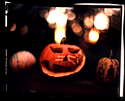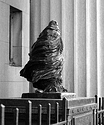David Jones
Member
- Joined
- Sep 29, 2009
- Messages
- 66
- Format
- 35mm
Lots of good answers. The reason I am thinking of using an anti newton glass is because my enlarger has a full glass carrier and I thought that it would be simple enough just to put an AN top glass in and get flat negs with no newton rings. I have never used AN glass before and was sure it would be ok until I saw some pics on the net with the AN glass printed as well as the image! Maybe it was bad focusing. I have some Aumet 35 glassless inserts and Bimena 6x9 but no 6x6 (although I may just make some). I just didn't want to blow cash on the AN if it was no good but it seems that it is fine.
dave
dave






